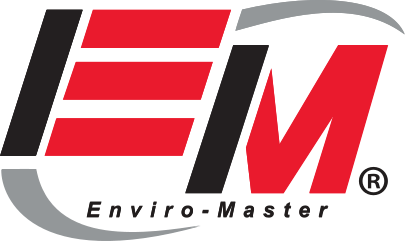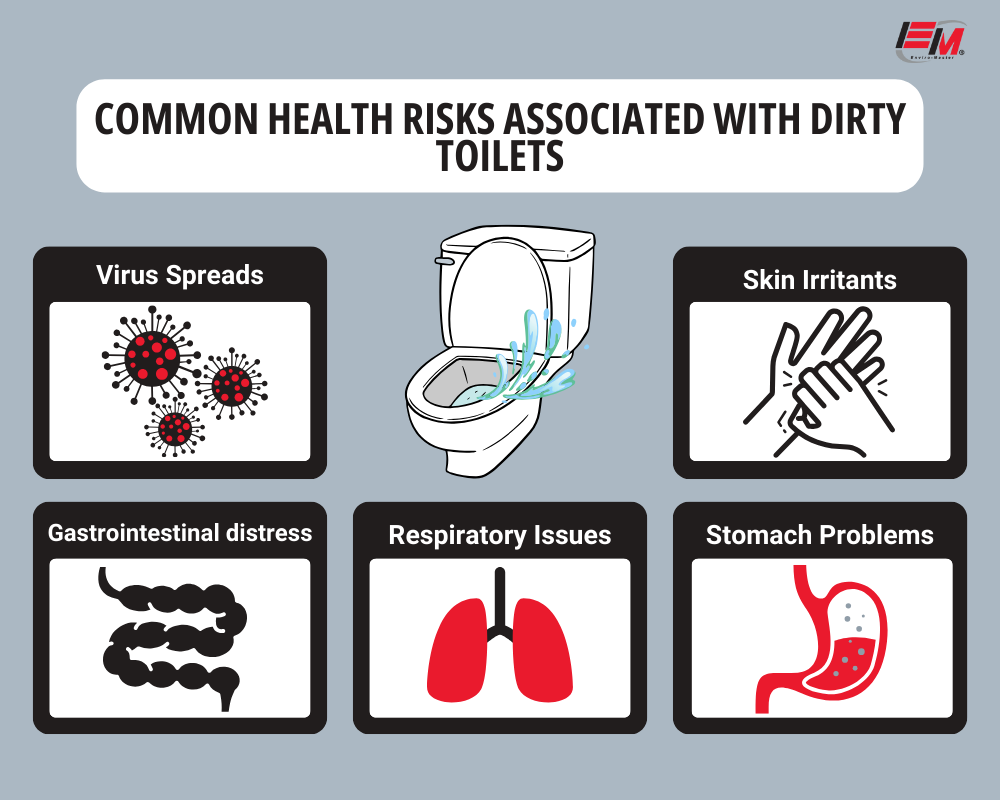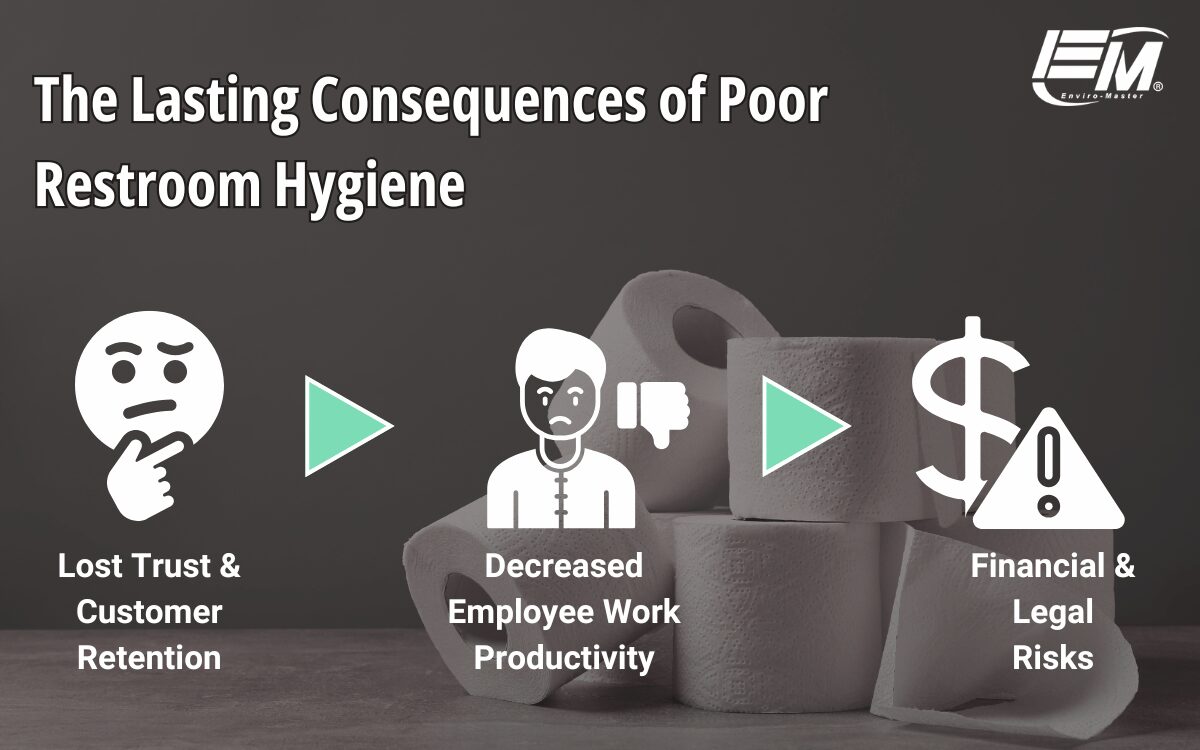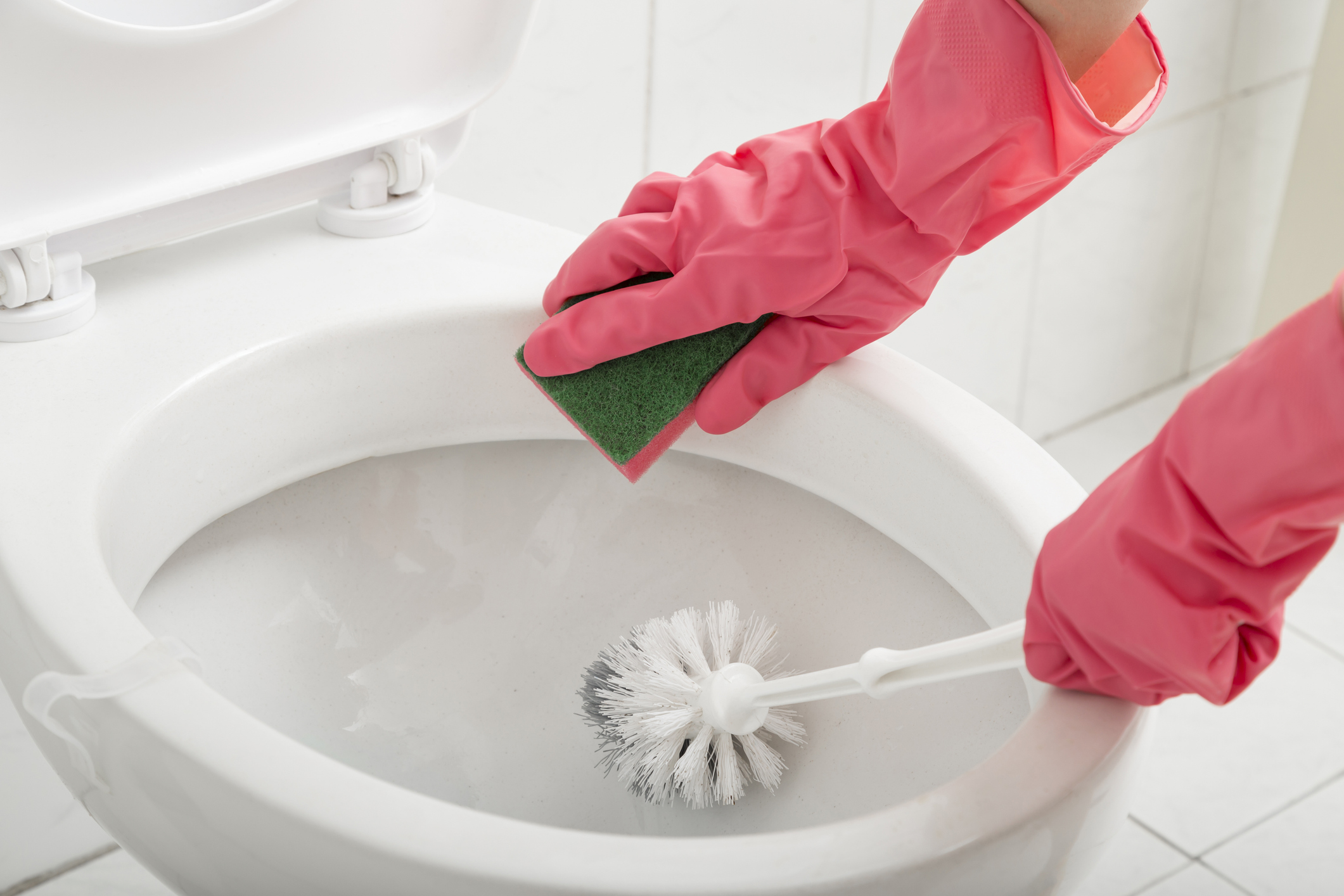Nobody enjoys walking into a dirty toilet, but beyond the discomfort, unclean restrooms can pose serious health risks. Public restrooms, workplaces, and businesses that neglect proper sanitation create the perfect breeding ground for bacteria, viruses, and other harmful pathogens. From lingering odors to visible grime and urine, dirty toilets contribute to unsanitary conditions that can lead to the spread of infections, skin irritations, and respiratory issues.
Maintaining clean restrooms isn’t just about appearance—it’s a crucial factor in public health and hygiene. Whether in a restaurant, office, or gas station, the state of a restroom can impact customer satisfaction, employee well-being, and even business reputation. So, what’s the real link between dirty toilets and health issues? Let’s take a closer look at the risks, consequences, and the best ways to keep restrooms safe and sanitary.
Common Health Risks Associated with Dirty Toilets:
Bacteria and Viruses
Every time a toilet is flushed, tiny droplets of water (known as toilet plumes) can become airborne, spreading germs to nearby surfaces, including the toilet seat, stall door, and even the paper towel dispenser. Without proper cleaning, these unsanitary conditions allow harmful microorganisms to thrive.
One of the biggest concerns in unclean restrooms is the spread of E. coli, Salmonella, and norovirus—bacteria and viruses responsible for severe stomach illnesses, food poisoning, and gastrointestinal distress. Public toilets, especially those in gas stations, restaurants, and workplaces, see high foot traffic, increasing the risk of contamination. A restroom that lacks regular sanitation can quickly become a breeding ground for infections, putting employees, customers, and visitors at risk.
Skin and Respiratory Issues
Poorly maintained restrooms can also trigger skin and respiratory problems. Mold, mildew, and lingering human waste can worsen allergies and respiratory conditions, particularly for individuals with asthma or weakened immune systems.
Contact with contaminated restroom surfaces—such as toilet paper holders, stall doors, or sink faucets—can lead to skin infections or irritation. Even something as simple as washing hands in a dirty sink can introduce bacteria if proper hygiene measures aren’t in place.
The Bigger Public Health Concern
When sanitation issues go unchecked, they don’t just affect individuals—they become a larger public health concern.
– Schools: Poor restroom hygiene can contribute to illness outbreaks, leading to increased absenteeism among students.
– Workplaces: Employees exposed to unsanitary conditions may struggle to focus, take more sick days, and even experience reduced job satisfaction.
The Next Step: Prioritizing Restroom Sanitation
Understanding the risks of dirty toilets is the first step in addressing sanitation problems. The next step? Implementing proper cleaning measures and recognizing the importance of routine maintenance to ensure clean restrooms for everyone.
The Role of Proper Sanitization in Preventing Disease
The best way to reduce the health risks associated with dirty toilets is through consistent sanitation and proper hygiene practices. Toilet cleaning isn’t just about wiping down surfaces—it involves a comprehensive approach that eliminates harmful bacteria, prevents the spread of illness, and creates a healthier environment for restroom users.
Regular Disinfection
One of the most effective ways to maintain clean toilets is through regular disinfection. High-touch surfaces, such as toilet seats, stall doors, paper towel dispensers, and toilet paper holders, should be cleaned frequently to minimize the risk of contamination. Using hospital-grade disinfectants, like electrostatic spraying, can kill germs on contact, preventing the spread of E. coli, norovirus, and other harmful bacteria that thrive in public restrooms.
Deep Cleaning Surfaces
Routine disinfection is essential, but deep cleaning goes a step further in eliminating hidden bacteria and grime. Restrooms have multiple surfaces that require thorough cleaning beyond daily wipe-downs, including:
– Floors and Grout: Dirt, moisture, and bacteria accumulate in grout lines, making them a breeding ground for germs. Scrubbing with industrial cleaners or steam cleaning can remove deep-set stains and bacteria.
– Toilet Bowls and Urinals: Mineral deposits and bacteria buildup in toilets and urinals can lead to foul odors and unsanitary conditions. Using mineral-removing agents and deep-cleaning solutions prevents buildup and keeps plumbing systems functioning properly.
– Sink Basins and Faucets: These high-touch areas harbor bacteria from unwashed hands and soap residue. Regular deep cleaning with disinfectants reduces cross-contamination.
– Stall Walls: Restroom stall walls collect bacteria from splashes, sneezes, and direct contact. Wiping them down with antibacterial solutions helps maintain hygiene.
– Ceilings and Vents: Dust and mold spores accumulate in restroom vents, reducing air quality and spreading allergens. Cleaning air vents and ceiling surfaces ensures proper airflow and prevents mold growth.
Proper Restroom Ventilation
Beyond surface cleaning, proper restroom ventilation plays a crucial role in minimizing airborne contaminants. Restroom facilities that lack airflow allow moisture buildup, leading to mold, mildew, and unpleasant odors. This can trigger respiratory issues, allergies, and even skin irritation for restroom users. Ensuring proper air circulation, whether through ventilation fans or open windows, helps maintain a cleaner and healthier restroom environment.
Hand Hygiene
Hand hygiene is another key factor in preventing disease transmission. Studies show that nearly 95% of people don’t wash their hands long enough to remove germs effectively. If a public restroom is missing essential sanitation supplies —like soap, paper towels, or a working toilet paper holder—restroom users are less likely to wash their hands properly, increasing the risk of cross-contamination. This is especially concerning in high-traffic locations such as restaurants, gas stations, schools, and workplaces, where large numbers of people rely on shared restroom facilities.
Waste Management
Additionally, waste management plays an important role in keeping restrooms sanitary. Overflowing trash bins, soiled toilet paper, and improper disposal of hygiene products contribute to unsanitary conditions. Implementing a routine waste removal system ensures that human waste and other contaminants don’t accumulate, reducing unpleasant odors and preventing the spread of germs.
The Lasting Consequences of Poor Restroom Hygiene
Whether in a business, school, or public facility, poor sanitation affects user experience, reputation, and even financial stability.
Lost Trust and Customer Retention
A poorly maintained restroom sends the message that cleanliness isn’t a priority, making customers question the overall hygiene of a business. Restaurants, hotels, and gas stations with unclean facilities often see negative reviews that deter potential customers. In many cases, people associate restroom cleanliness with the quality of service or food a business provides.
Would you trust a restaurant with a filthy bathroom? Most people wouldn’t. Studies show that over majority of customers believe restroom cleanliness is a direct reflection of a business’s overall standards. Once that trust is lost and bad reviews outweigh the good ones, it’s difficult to rebuild your reputation with the public eye.
Employee Well-Being and Workplace Productivity
For workers, a poorly maintained restroom is more than an inconvenience—it’s a disruption to their workday. When restrooms are neglected, employees may avoid using them altogether, leading to discomfort, reduced concentration, and lower productivity. Some may even leave the premises to find a cleaner facility, resulting in lost time and efficiency.
Similarly, in schools, unsanitary restrooms create challenges for students throughout their school days. Many students avoid using the facilities altogether, leading to discomfort and distraction. Over time, this can negatively affect their health, concentration, and academic performance.
By maintaining clean, accessible, and properly stocked restrooms, businesses and schools can create an environment where workers and students feel comfortable, stay healthy, and remain focused throughout their school days or work shifts.
Financial and Legal Risks
Ignoring restroom hygiene can result in costly consequences beyond customer complaints. Businesses and public facilities that fail to maintain proper sanitation can face:
– Health code violations and potential fines from regulatory agencies.
– Increased maintenance costs due to long-term neglect causing plumbing and structural damage.
– Potential lawsuits if customers or employees contract illnesses linked to poor restroom conditions.
Failing to prioritize hygiene isn’t just a minor oversight—it can impact revenue, legal compliance, and public perception in ways that are difficult to reverse.
How Enviro-Master Can Help Maintain a Sanitary and Safe Restroom Environment
Maintaining a hygienic restroom goes beyond a quick wipe-down and restocking supplies—it requires a systematic approach to cleaning, disinfecting, and preventing contamination. Businesses, schools, and public facilities that take restroom hygiene seriously see fewer complaints, healthier employees and customers, and stronger reputations.
That’s where Enviro-Master comes in. As a commercial cleaning service, Enviro-Master specializes in deep-cleaning solutions designed to eliminate harmful bacteria, odors, and built-up grime. Our comprehensive restroom hygiene program tackles everything from floor-to-ceiling sanitation to specialized treatments that prevent odor and germ accumulation.
Our Restroom Services
– Restroom Cleaning Service – A professional deep-cleaning service that removes uric acid buildup, eliminates odors and ensures surfaces are sanitized with hospital-grade disinfectants
– Hand Hygiene Program – Provides businesses with hand soap and sanitizer dispensers, helping to reduce the spread of germs and illnesses.
– SaniPod Feminine Hygiene Solution – A touch-free disposal system that provides a discreet, sanitary way to dispose of feminine hygiene products, improving cleanliness and user experience.
– Electrostatic Spraying Service – A hospital-grade disinfection method that covers every surface, including high-touch areas often overlooked in routine cleaning.
– Tile & Grout Deep Cleaning – Breaks down dirt and residue, preventing the growth of mold and bacteria in moisture-prone areas.
– Drain Treatment – Reduces foul odors and prevents clogs that contribute to unclean restroom conditions.
– Paper Management Program – Ensures consistent restocking of essential supplies like hand soap, towels, and tissue, reducing waste and improving user experience.
By partnering with a professional cleaning service, businesses can eliminate sanitation concerns, ensure compliance with health regulations, and create a restroom environment that customers and employees appreciate.
A Cleaner Future Starts Today
A neglected restroom doesn’t just create discomfort—it affects health, business success, and overall well-being. Investing in proper cleaning and hygiene maintenance is the best way to protect visitors, employees, and customers from unnecessary health risks.
Want to guarantee your facility meets the highest standards of cleanliness? Contact Enviro-Master today to learn more about our professional cleaning solutions.




